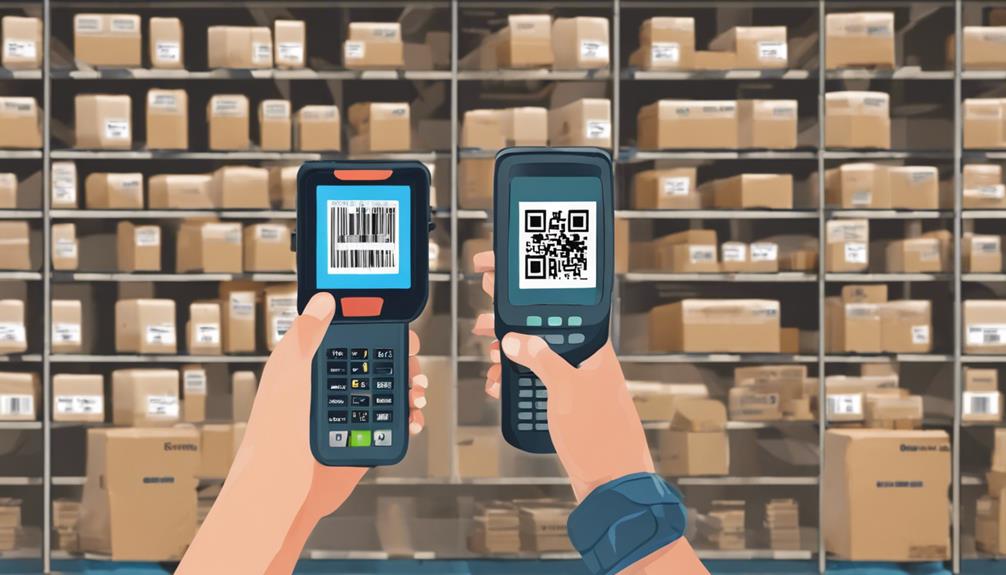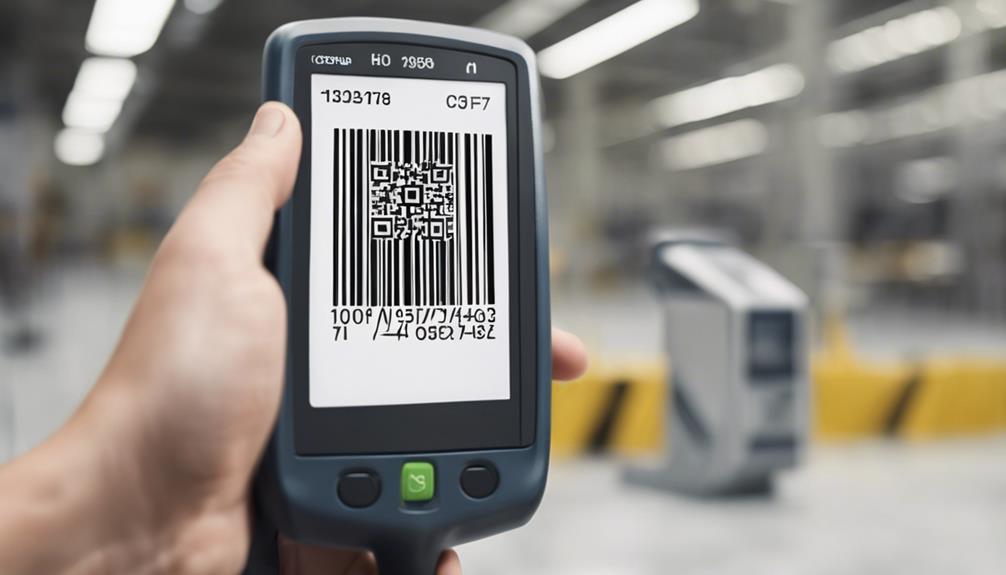With the rising importance of efficient data management, understanding how barcode indexing enhances data retrieval processes is crucial. Imagine a system that not only simplifies data access but also boosts the speed and accuracy of retrieving critical information. By leveraging barcode indexing effectively, you can transform the way you handle data and streamline your operations. Stay tuned to discover the seven effective ways barcode indexing can revolutionize your data retrieval methods and propel your organization forward.
Simplifying Data Retrieval With Barcode Indexing
To simplify data retrieval efficiently, Barcode Indexing proves to be a powerful tool. By assigning unique barcodes to each document or item, Barcode Indexing enables quick and accurate identification, significantly increasing efficiency in data retrieval processes. The streamlined approach of Barcode Indexing eliminates the need for manual sorting and searching, saving valuable time and resources.
With Barcode Indexing, you can easily track and locate specific information within a vast database by simply scanning the barcode associated with the desired item. This method reduces the margin for error and enhances the overall accuracy of data retrieval tasks. By leveraging Barcode Indexing, you can optimize your workflow and ensure a seamless process for accessing essential data promptly.
Implementing Barcode Indexing in your data management system is a proactive step towards enhancing operational productivity and streamlining processes. This technology empowers you to retrieve information swiftly, improving overall organizational efficiency. Embracing Barcode Indexing will revolutionize the way you handle data retrieval, making it a fundamental component of your workflow optimization strategy.
Improving Speed of Data Retrieval With Barcode Indexing
Enhancing the speed of data retrieval is a critical aspect of optimizing operational efficiency, and Barcode Indexing stands out as a key tool in achieving this goal. By leveraging Barcode Indexing, you can significantly improve the efficiency of data retrieval processes. Here’s how Barcode Indexing can help speed up data retrieval:
- Data visualization: Barcode Indexing allows for quick and easy identification of items through visual representations, enabling faster data retrieval.
- Process automation: Barcode Indexing automates the data retrieval process, reducing the need for manual intervention and accelerating the speed at which information is accessed.
- Improved search capabilities: Barcode Indexing enhances search functionalities, enabling swift retrieval of specific data points within a database.
- Enhanced accuracy: By implementing Barcode Indexing, you can minimize errors in data retrieval, ensuring that the information accessed is precise and reliable.
Incorporating Barcode Indexing into your data management system can streamline operations and boost productivity by expediting the retrieval of critical information.
Utilizing Barcode Indexing for Large Data Sets
Utilizing barcode indexing for large data sets can significantly speed up the search process by providing quick access to specific data points. This method efficiently organizes vast amounts of data, making it easier to locate and retrieve information promptly. Furthermore, the accuracy of data retrieval is enhanced through the systematic categorization enabled by barcode indexing.
Speeds up Search
By implementing barcode indexing for large data sets, you can significantly enhance the speed of search operations. Barcode indexing allows for swift and accurate retrieval of data, especially in vast databases. Here are four ways barcode indexing speeds up search:
- Optimized Data Access: Barcode indexing enables rapid access to specific data points, reducing the time needed to locate information within a dataset.
- Efficient Query Processing: Barcode indexing streamlines the query processing process, ensuring quick retrieval of relevant data based on search criteria.
- Faster Search Results: With barcode indexing, search results are delivered promptly, enhancing the overall efficiency of data retrieval tasks.
- Improved System Performance: By leveraging barcode indexing for search operations, system performance is enhanced, leading to quicker responses to user queries and requests.
Organizes Data Efficiently
Implementing barcode indexing for large data sets not only speeds up search operations but also plays a crucial role in efficiently organizing data. Data organization is a fundamental aspect of managing vast amounts of information effectively. By assigning unique barcodes to each data entry, the system can categorize and store information systematically, enabling streamlined retrieval processes.
Barcode indexing allows for the creation of structured databases where information is classified based on predefined categories or criteria. This method ensures that data is stored in a logical order, making it easier to locate specific records when needed. Through efficient data organization, the system can quickly pinpoint the exact location of a particular dataset, eliminating the need for manual sorting through extensive files.
Moreover, the organized nature of data due to barcode indexing enhances the overall accessibility and usability of information. Users can retrieve relevant data promptly, leading to improved decision-making processes and operational efficiency. In conclusion, the systematic organization facilitated by barcode indexing is essential for maintaining order and enabling swift access to data within large datasets.
Improves Data Accuracy
To enhance the accuracy of data within large datasets, integrating barcode indexing proves to be a crucial mechanism. By incorporating barcode indexing into your data management system, you can significantly improve the accuracy of your information retrieval processes. Here’s how barcode indexing can benefit you:
- Elimination of Human Error: Barcode scanning reduces the potential for human error in data entry, ensuring high accuracy levels.
- Real-Time Data Updates: Barcode indexing allows for immediate updates to data, increasing efficiency and ensuring accurate information retrieval.
- Enhanced Data Traceability: With barcode indexing, you can easily trace the source and movement of data, leading to improved accuracy in data handling.
- Streamlined Data Verification: Barcode systems enable quick and accurate data verification processes, minimizing errors and enhancing overall data accuracy.
Integrating barcode indexing into your data management strategy can significantly enhance accuracy, leading to increased efficiency in data retrieval processes.
Maintaining Data Integrity With Barcode Indexing
With barcode indexing, maintaining data integrity becomes a streamlined process. Through data validation mechanisms and error prevention protocols, barcode indexing ensures that the information stored within the system remains accurate and consistent. Data validation involves checking and confirming that the data entered into the system meets specific criteria and standards. By utilizing barcodes, which are unique identifiers assigned to each item or document, errors in data entry are minimized, thus preventing inaccuracies from creeping into the database.
Barcode indexing plays a crucial role in maintaining data integrity by providing a reliable method for organizing and retrieving information. The use of barcodes helps in reducing human errors, as scanning barcodes is more efficient and less prone to mistakes compared to manual data entry. Additionally, barcodes offer a quick and accurate way to link physical documents or items to their corresponding digital records, ensuring that the data remains consistent across different platforms. By leveraging barcode indexing, organizations can uphold the integrity of their data and optimize the retrieval process.
Leveraging Barcode Indexing for Specific Data Types
Barcodes offer a structured method of organizing data that can be leveraged effectively for handling specific data types. When it comes to data categorization and information organization, barcode indexing can be particularly beneficial. Here are some ways to leverage barcode indexing for specific data types:
- Inventory Management: Use barcode indexing to categorize and track inventory items efficiently, enabling quick retrieval and updates in the system.
- Document Management: Implement barcode indexing to organize and retrieve documents such as invoices, contracts, and reports swiftly, streamlining information access.
- Patient Records: Utilize barcode indexing in healthcare settings to categorize and manage patient records securely, ensuring quick access to critical medical information.
- Library Cataloging: Employ barcode indexing to categorize books and other library materials, simplifying the cataloging process and enhancing information retrieval for patrons.
Ensuring Secure Data Retrieval With Barcode Indexing
When considering the implementation of barcode indexing for data retrieval, ensuring secure data transfer is paramount. By incorporating data security measures within the barcode indexing system, you can safeguard sensitive information from unauthorized access. This approach not only enhances data security but also improves the overall efficiency of retrieval processes.
Data Security Measures
Data security is a critical aspect of any system that handles sensitive information. To ensure secure data retrieval with barcode indexing, implementing robust security measures is essential. Here are some key data security measures to consider:
- Data Encryption: Utilize encryption techniques to encode data, making it unreadable without the correct decryption key.
- Access Control: Implement strict access control policies to regulate who can view, edit, or delete data within the system.
- Regular Auditing: Conduct routine audits to monitor access logs and detect any unauthorized activities or breaches.
- Backup and Recovery: Establish a comprehensive backup and recovery plan to safeguard data in case of system failures or cyber-attacks.
Efficiency in Retrieval
By utilizing barcode indexing, organizations can significantly enhance the efficiency of data retrieval processes while ensuring secure handling of sensitive information. Enhanced organization is achieved through the systematic categorization of data using unique barcode identifiers. These identifiers allow for quick identification and retrieval of specific information, optimizing workflow and reducing the time spent searching for files manually.
Streamlined access is another key benefit of barcode indexing in data retrieval. With barcodes, users can swiftly locate and access the required data by simply scanning the barcode, eliminating the need for manual sorting and searching through numerous files. This not only saves time but also reduces the likelihood of errors that can occur during manual data retrieval processes.
Exploring the Future of Data Retrieval With Barcode Indexing
To explore the future of data retrieval with barcode indexing, we delve into the intricate mechanisms that underpin this innovative technology. Barcode indexing is poised to revolutionize data retrieval processes, offering unprecedented efficiency and accuracy. Here are some key areas to consider:
- Enhanced Data Visualization: Barcode indexing will enable more advanced data visualization techniques, allowing for clearer insights and trends to be identified swiftly.
- Integration with Machine Learning: The integration of barcode indexing with machine learning algorithms will pave the way for autonomous data retrieval systems that continuously learn and adapt to optimize results.
- Real-time Retrieval Capabilities: Future developments in barcode indexing will focus on real-time data retrieval, ensuring that information is promptly accessible when needed.
- Interconnectivity Across Platforms: Barcode indexing is anticipated to become more versatile, facilitating seamless interconnectivity across various platforms and systems for enhanced data retrieval experiences.
Frequently Asked Questions
How Can Barcode Indexing Help in Data Privacy and Protection?
To enhance data privacy and protection, barcode indexing provides a foundation for secure data encryption and strict access control. By linking physical items to digital records through barcodes, sensitive information is safeguarded effectively.
Can Barcode Indexing Be Used for Real-Time Data Retrieval?
When you implement barcode indexing for real-time data retrieval, you enhance scalability and efficiency. This method ensures accuracy and speed in accessing information promptly. Barcode technology streamlines processes, making data retrieval seamless and effective.
What Are the Limitations of Barcode Indexing for Small Datasets?
When dealing with small datasets, barcode indexing may present scalability challenges due to its infrastructure requirements. Cost implications can also arise, as setting up and maintaining barcode systems for limited data volumes may not be cost-effective.
Is Barcode Indexing Compatible With Different Database Management Systems?
You’ll find barcode indexing compatible with various database management systems through rigorous compatibility testing. Seamless database integration streamlines data retrieval. Embrace the efficiency boost and accuracy that barcode indexing brings to your system.
How Does Barcode Indexing Handle Data Redundancy and Duplication?
Barcode indexing efficiently manages data redundancy by utilizing data normalization techniques. By assigning unique barcodes to each item, duplicates are easily identified and eliminated. This systematic approach streamlines data retrieval processes, enhancing overall database efficiency.



